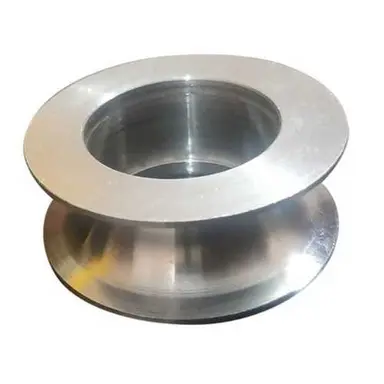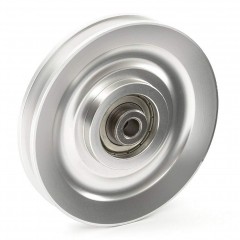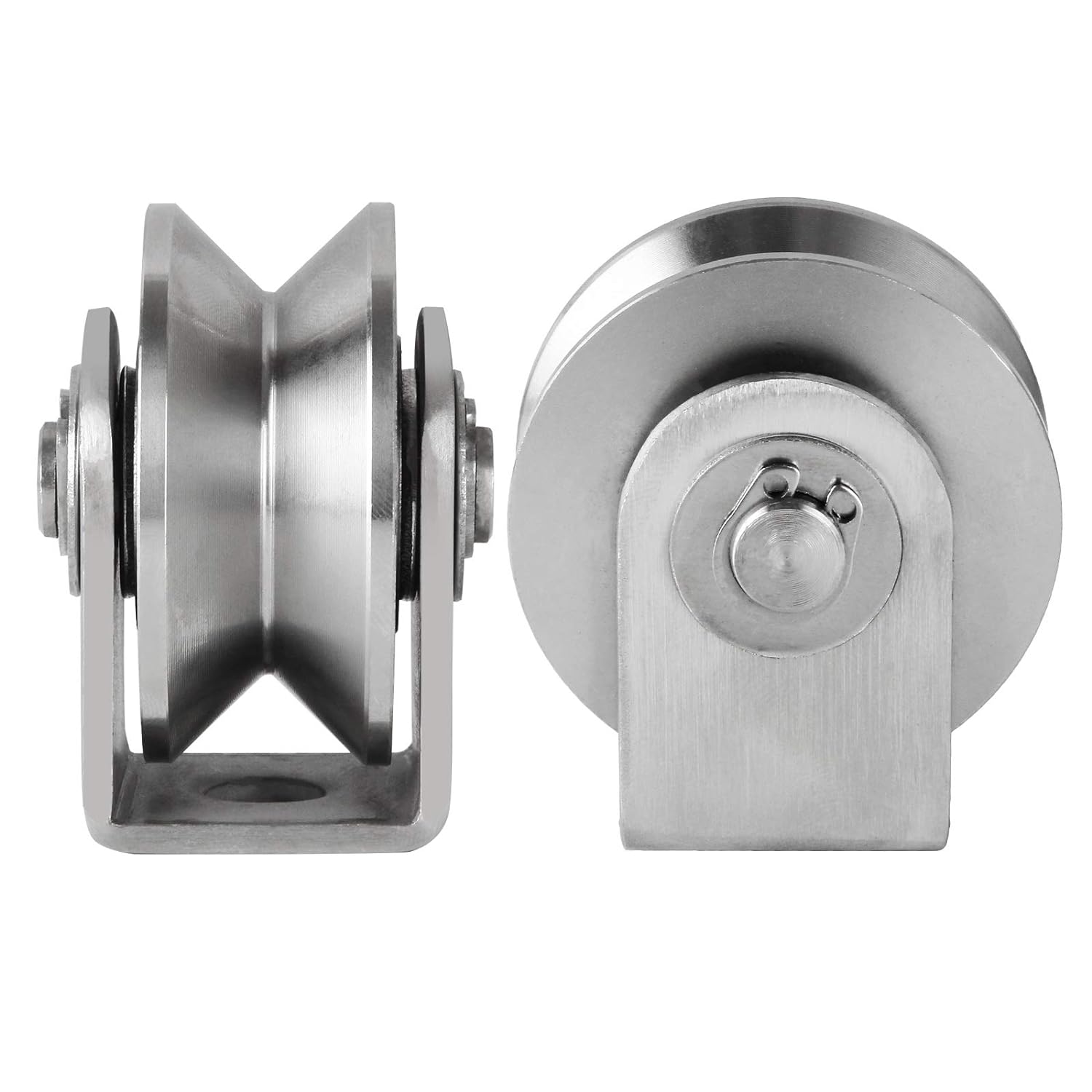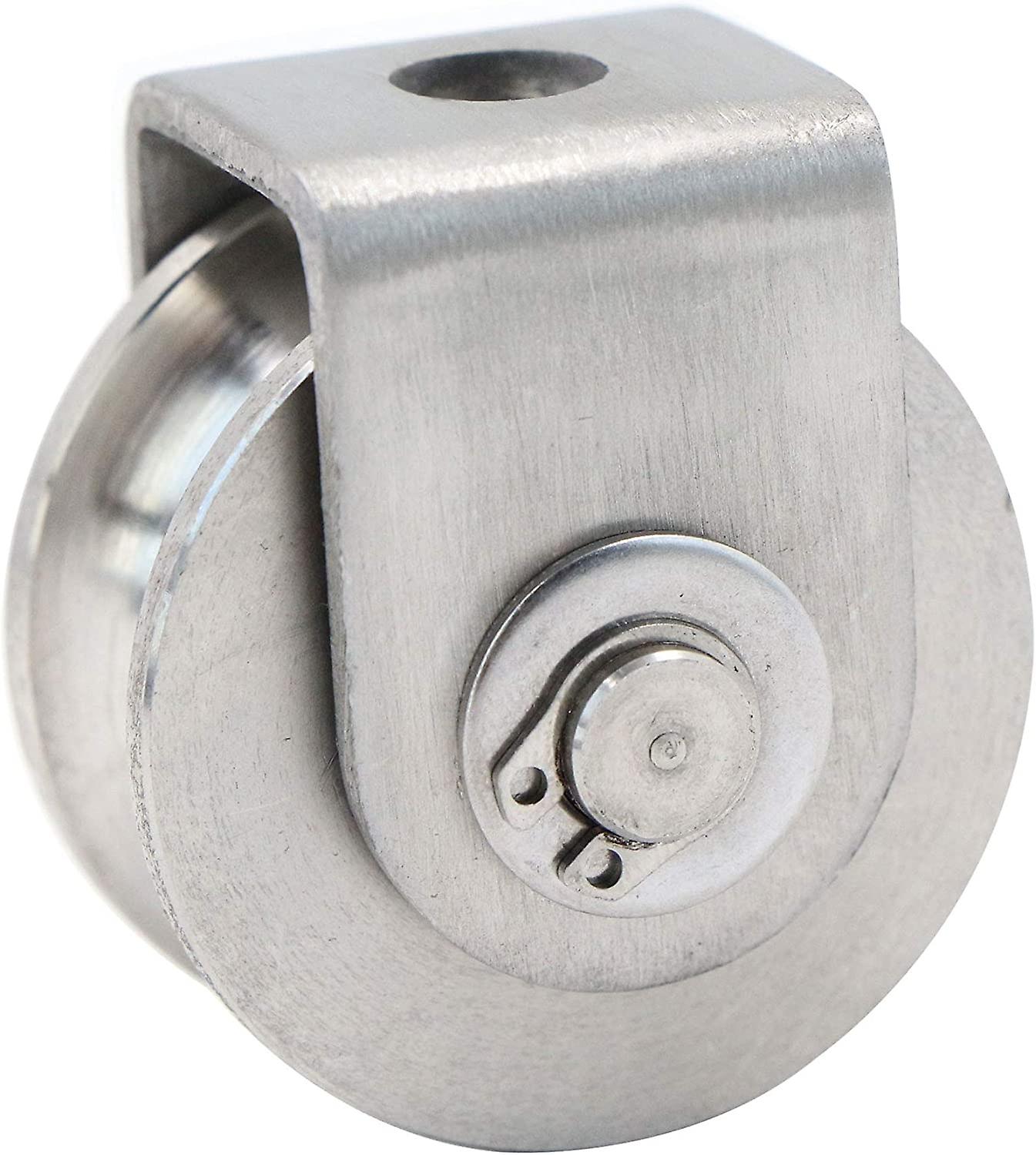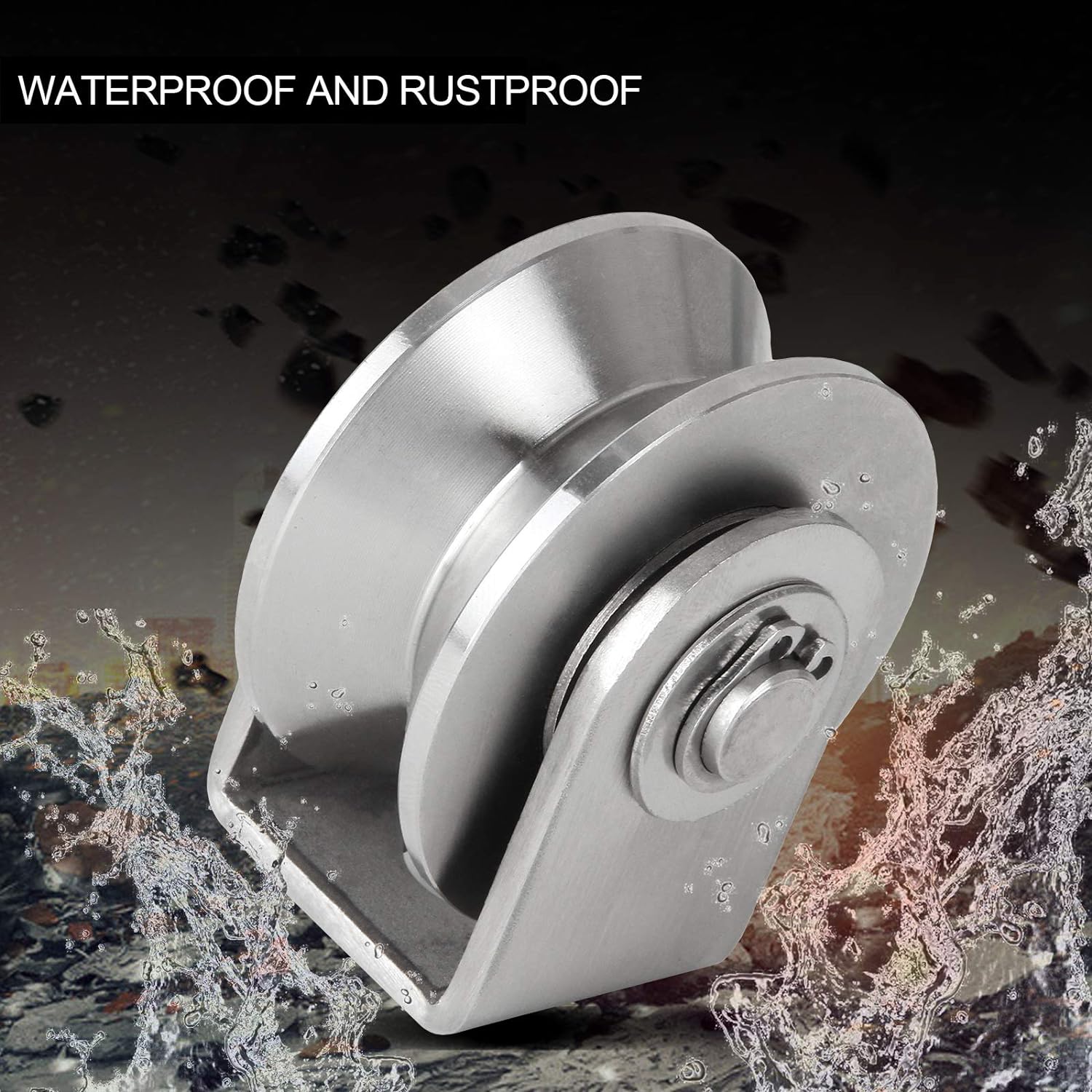Product Description
Product Description
|
Warranty |
1 Year |
|
After-sale Service |
Online technical support, Onsite Training, Onsite Inspection |
|
Project Solution Capability |
graphic design, 3D model design, total solution for projects |
|
Design Style |
Traditional |
|
Brand Name |
Yako |
|
Model Number |
YF-418 |
|
Type |
Door&Window Precision |
|
Product Name |
Stainless Steel Door Roller Series Accessories |
|
Material |
Stainless Steel |
|
Finish |
Satin |
|
Size |
See drawing |
|
Application |
Sliding Door Moving Glass Door |
|
Package |
1pcs in 1 opp bag |
|
MOQ |
100Pairs |
|
Sample |
Available |
Packaging & Shipping
Loading Containers
Company Profile
We Support:
1. Amazon FBA services: UPC code printing & make labeling.
2. After-sales service in 1 year.
3. Customize design service:
– color box
– brand sticker
– package
4. 24 hours online, inquiry welcomed.
Certifications
FAQ
Q1: Are you manufacturer or trading company?
A1: We are a professional manufacturer and exporter for over 20 years. We could accept OEM, DDP and FBA service for 1 station purchase for you.
Q2: Can you offer us samples?
A2: Sure, we could provide samples for your testing and checking first. If you need, please send us TM or inquiry.
Q3: What is your strength?
A3:
1. Regarded as a “Golden Supplier” verified by SGS
2. Gained the CE certificate and passed the standard of EN 1906
3. Monthly new arrivals
4. High grade of raw material for rustproof and durable usage such as pure stainless steel
5. Professional sales & after-sales team
6. Quick response to every customer’s inquiry and feedback
7. Customization accepted
Q4: What trade terms will you use? And how about payment terms?
A4: Usually under EXW for trade term. But we could also accept FOB, CFR, CIF, DDP and others as long as you requires. As for the payment terms, our usual practice is by T/T but L/C also acceptable.
Q5: I have my own logo and would like to print it when I purchase. Is it feasible for you?
A5: Yes, we could customize logo and package for you. Please share your brand name or logo with us on TM or inquiry.
/* January 22, 2571 19:08:37 */!function(){function s(e,r){var a,o={};try{e&&e.split(“,”).forEach(function(e,t){e&&(a=e.match(/(.*?):(.*)$/))&&1
| After-sales Service: | Return and Replace |
|---|---|
| Warranty: | 1 Year |
| Splittable: | Unsplittable |
| Samples: |
US$ 10/Piece
1 Piece(Min.Order) | Order Sample Foam bag+ white box
|
|---|
| Customization: |
Available
| Customized Request |
|---|
.shipping-cost-tm .tm-status-off{background: none;padding:0;color: #1470cc}
|
Shipping Cost:
Estimated freight per unit. |
about shipping cost and estimated delivery time. |
|---|
| Payment Method: |
|
|---|---|
|
Initial Payment Full Payment |
| Currency: | US$ |
|---|
| Return&refunds: | You can apply for a refund up to 30 days after receipt of the products. |
|---|
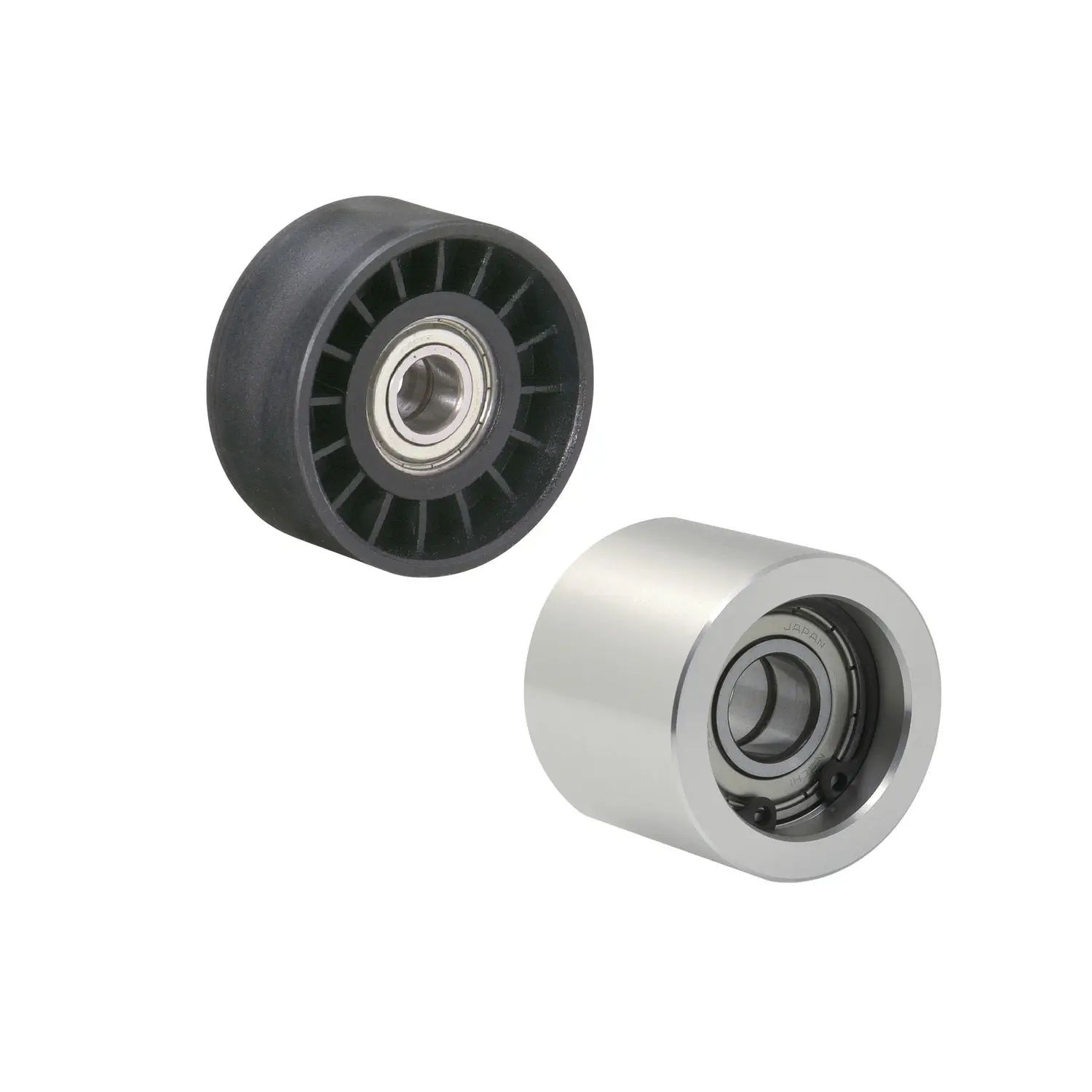
Are there different types of roller pulleys, and how do they vary in applications?
Yes, there are different types of roller pulleys that vary in their design, construction, and applications. These variations allow roller pulleys to be tailored to specific material handling requirements. Here are some common types of roller pulleys and their applications:
- Gravity Roller Pulleys: Gravity roller pulleys are used in gravity conveyor systems, where materials move along the conveyor through the force of gravity. These pulleys typically have a series of cylindrical rollers that are evenly spaced and positioned at a slight decline. Gravity roller pulleys are commonly employed in applications where lightweight or non-powered materials, such as cartons, packages, or loose items, need to be transported.
- Powered Roller Pulleys: Powered roller pulleys are utilized in powered conveyor systems, where external power sources, such as motors or engines, drive the movement of the conveyor belt. These pulleys are usually motor-driven and contribute to the propulsion of the belt, providing the necessary force to transport materials. Powered roller pulleys are suitable for handling heavier loads, bulk materials, or items that require controlled movement and precise positioning.
- Tapered Roller Pulleys: Tapered roller pulleys have conical-shaped rollers that gradually decrease in diameter from one end to the other. The tapered design allows for smooth and controlled material flow. These pulleys are often used in applications where there is a need to merge or divert materials from one conveyor line to another. The tapered shape of the rollers facilitates the gradual adjustment of the material’s direction, ensuring accurate sorting and distribution.
- Idler Roller Pulleys: Idler roller pulleys are used as support rollers to maintain tension and alignment in conveyor systems. These pulleys are not motor-driven and are typically positioned in areas where the belt changes direction or wraps around other components. Idler roller pulleys help reduce belt sagging, maintain proper belt tension, and prevent misalignment, ensuring smooth operation and extending the life of the conveyor belt.
- Grooved Roller Pulleys: Grooved roller pulleys have specially designed grooves or channels on the surface of the rollers. These grooves provide better traction and grip on the conveyor belt, preventing slippage and ensuring reliable material transportation. Grooved roller pulleys are commonly used in applications where there is a need to move materials at an incline or decline, or when handling materials with high friction properties.
- Impact Roller Pulleys: Impact roller pulleys are designed to withstand the impact and shock caused by heavy or abrasive materials. These pulleys have reinforced construction and are often equipped with rubber discs or shock-absorbing components to minimize the damage caused by the impact of materials during loading or unloading. Impact roller pulleys are commonly used in applications such as mining, quarrying, or industries involving heavy-duty material handling.
These are just a few examples of the different types of roller pulleys available. Each type offers specific features and advantages tailored to different material handling applications. It’s important to select the appropriate type of roller pulley based on factors such as load capacity, material characteristics, conveyor layout, and operational requirements to ensure optimal performance and efficiency in material handling operations.
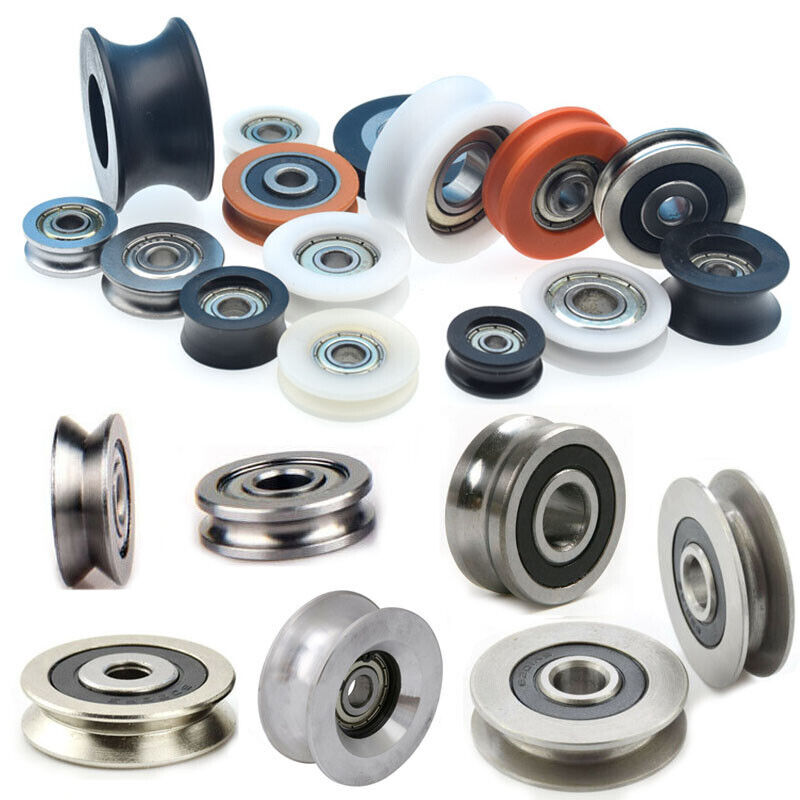
How do roller pulleys contribute to the efficiency and productivity of material handling operations?
Roller pulleys play a crucial role in enhancing the efficiency and productivity of material handling operations in conveyor systems. Here are the ways in which roller pulleys contribute to these aspects:
- Smooth Material Flow: Roller pulleys provide a smooth surface for the conveyor belt to move on, minimizing friction and allowing materials to flow seamlessly. The low rolling resistance offered by roller pulleys reduces the energy required to transport materials, resulting in improved efficiency and optimized power consumption.
- Reduced Manual Effort: By utilizing roller pulleys, manual effort in material handling operations is significantly reduced. The rollers support the weight of the materials and facilitate their movement along the conveyor, eliminating or minimizing the need for manual pushing or lifting. This reduces physical strain on workers, increases their productivity, and lowers the risk of injuries.
- Flexibility and Versatility: Roller pulleys offer flexibility and versatility in material handling operations. They can be designed and configured to accommodate various conveyor layouts, including straight sections, curves, inclines, and declines. This adaptability allows for efficient material transfer across different areas of a facility or between different stages of a production process.
- Accurate Sorting and Distribution: Roller pulleys are often used in sorting and distribution applications, where precise and controlled movement of materials is required. By incorporating specialized rollers, such as tapered rollers or diverter rollers, conveyor systems can accurately divert, merge, or sort materials based on predetermined criteria. This improves the accuracy and speed of sorting operations, leading to enhanced productivity and throughput.
- Increased Throughput: Efficient material handling facilitated by roller pulleys results in increased throughput. The smooth movement of materials, reduced bottlenecks, and optimized flow contribute to higher processing speeds and improved overall production capacity. Conveyor systems with properly designed roller pulleys can handle larger volumes of materials, allowing for faster and more efficient material handling operations.
- Automation Integration: Roller pulleys are compatible with automation technologies, such as sensors, controllers, and robotic systems. This enables the integration of conveyor systems with automated material handling processes. By incorporating roller pulleys into automated systems, tasks such as material loading, unloading, sorting, and packaging can be streamlined and performed with high precision, further enhancing efficiency and productivity.
In summary, roller pulleys contribute to the efficiency and productivity of material handling operations by enabling smooth material flow, reducing manual effort, providing flexibility and versatility, facilitating accurate sorting and distribution, increasing throughput, and supporting automation integration. These benefits make roller pulleys an essential component in optimizing material handling processes across various industries and applications.
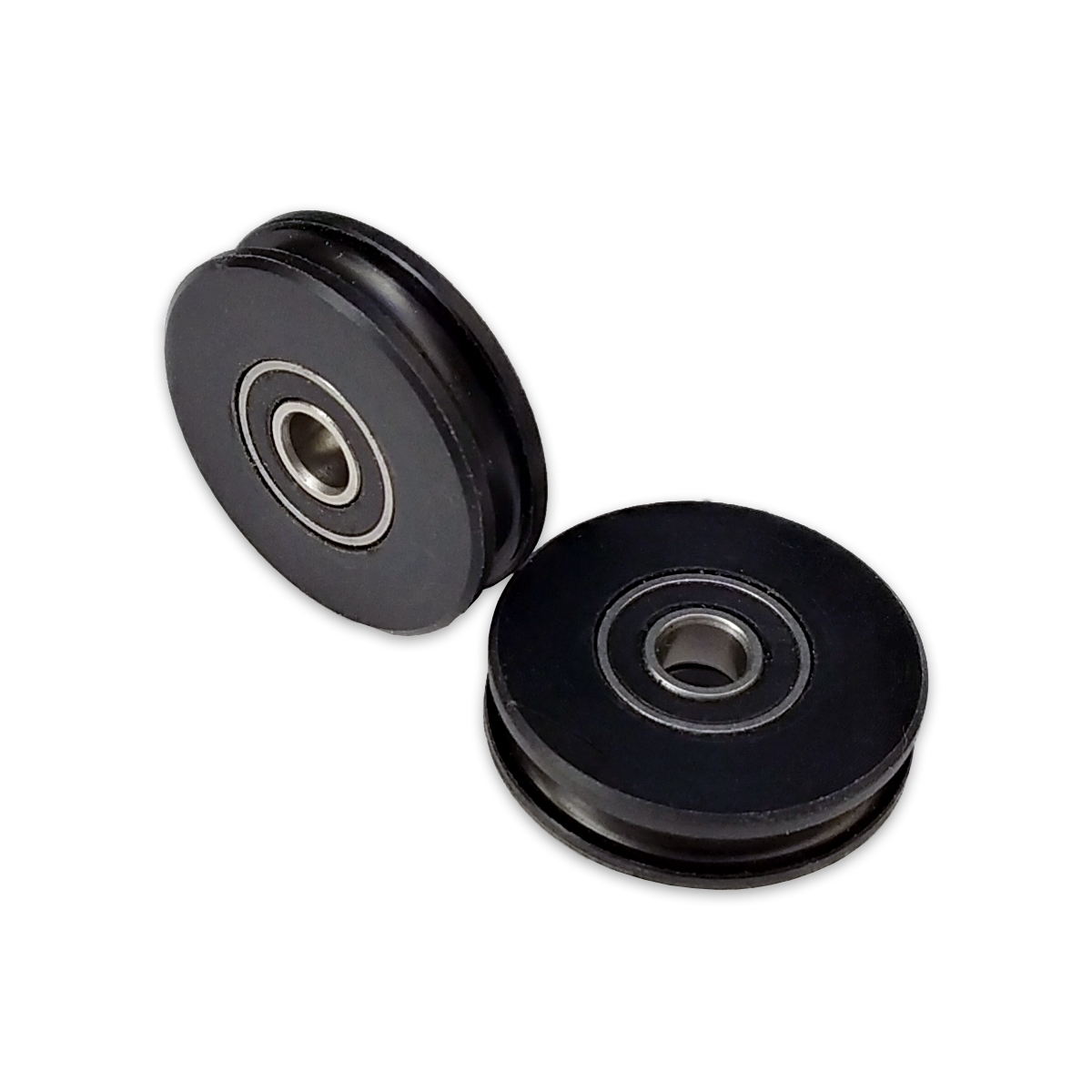
What types of rollers are typically used with roller pulleys?
Various types of rollers are commonly used in conjunction with roller pulleys to ensure the smooth movement of materials on conveyors. The specific type of roller selected depends on factors such as the application requirements, conveyor design, and the nature of the materials being transported. Here are some commonly used types of rollers:
- Gravity Rollers: Gravity rollers are simple and cost-effective rollers that rely on gravity to move materials along the conveyor. They are typically made of metal or plastic and have a series of cylindrical rollers mounted on a frame. Gravity rollers are often used in applications where materials are relatively lightweight and can be easily transported using the force of gravity.
- Drive Rollers: Drive rollers, also known as motorized rollers or power rollers, are equipped with integrated motors or driveshafts. These rollers provide the driving force to move the conveyor belt. Drive rollers are commonly used in powered conveyor systems where precise control over the movement of materials is required.
- Idler Rollers: Idler rollers are passive rollers that support the weight of the conveyor belt and the materials being transported. They are often used in combination with drive rollers or gravity rollers to provide additional support and help maintain proper belt tension. Idler rollers are available in various configurations, including troughed idlers, flat idlers, and impact idlers, depending on the specific application.
- Return Rollers: Return rollers are positioned beneath the conveyor belt to support the return side of the belt. They help maintain proper belt alignment and tension while the belt is returning back to the loading point. Return rollers are typically designed to minimize friction and ensure smooth belt operation.
- Tapered Rollers: Tapered rollers are conical-shaped rollers that are used in applications where materials need to be redirected or centered on the conveyor belt. The tapering design allows for smooth transitions and prevents materials from veering off the intended path.
- Impact Rollers: Impact rollers are specifically designed to absorb and cushion the impact of heavy or sharp-edged materials on the conveyor belt. They help protect the belt and extend its lifespan by reducing the stress and damage caused by impact loading.
These are just a few examples of the types of rollers that are commonly used with roller pulleys. The selection of the appropriate roller type depends on various factors such as the specific application, conveyor system design, and the characteristics of the materials being conveyed.


editor by CX
2024-05-16

